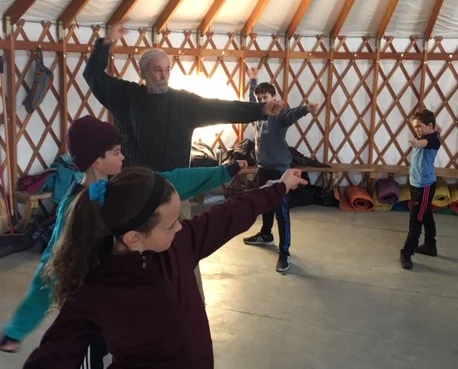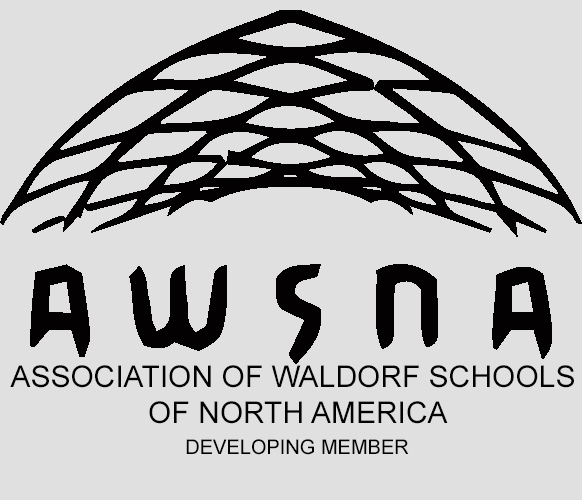From David Maynard, Middle School Movement Teacher:
In the last few decades, there have been many articles relaying research that tie movement with brain development as well as brain function. One of the main reasons cited for this connection is that movement leads to an increase in blood flow to the brain, supplying more oxygen along with hormonal molecules which stimulate brain growth and increase energy for functional processes.
Movement classes at Orchard Valley Waldorf School reflect an Anthroposophical approach, which coincides with the scientific research. I utilize my training in Spacial Dynamics physical education training and I strive to always address the principles of head, heart and hand, also known as thinking, feeling and willing.
In the first part of the class, when the student is fresh and has the energy to focus, we direct our attention to the thinking realm by doing conscious movements by practicing different Bothmer exercises, which were developed by Graff von Bothmer under the influence of Rudolf Steiner. In doing these exercises, the participant must bring to consciousness where their limbs are in relationship to the rest of their body. With practice a true balance is instilled, the skeletal and muscular systems are working efficiently and stress on the joints is reduced.
The second part of each class addresses the will forces, and here the students practice skills such as juggling, jumping rope, mat work, etc. In the case of juggling, for example, it takes patience and determination to learn such a skill. There are moments of frustration and one can almost give up when suddenly a breakthrough happens and juggling is happening! This stick-to-it-ness strengthens the will.
The last part and the longest segment of each class involves playing games that mainly relate to the feeling realm; this is where the social interaction between students comes into play. Emotions can be high at this time, and some of the questions that bring about disputes while playing games include “Are the teams fair?” “How about the refereeing—are the players honest?” Sometimes emotions run so high that everything has to come to a halt while we discuss the situation, which often pressures the different sides to resolve quickly and compromise. Games such as Spaceball, Team Handball, Frisbee, forms of Capture the Flag, Dodgeball, or Prisoner Base all utilize the habitual movements formed in the thinking section of the class, as well as the skills practiced in the willing part of the class.
Although the student is mainly addressing the thinking forces during the Bothmer exercises, the feeling and willing forces are also engaged to a lesser degree in the process of improving the movement of the exercise. The same is true for the skill section, where thinking and feeling plays more of a minor role, and in the games section in which thinking and willing are in the background presenting a holistic approach to movement.
As far as academics are concerned, when a student is active the result is an increase in the ability to focus. Humans have what is known as the midline barrier, an imaginary line that runs down the center of the body in early childhood. This line, for the young child, is hard to cross with their arms and legs. But as they grow older, crossing becomes easier and easier with the practice of different everyday crossing movements. Then this immature movement pattern is gradually integrated, helping to provide a sound foundation for physical and academic work. This crossing is important because when the child begins to read, the eyes have to cross the midline on every line on the page. Many children who have trouble reading have trouble crossing the midline.
Let’s look at how movement class might improve this for the child by taking a look at a skill such as juggling. Each time the ball is tossed it crosses the midline and then has to be caught, which strengthens the midline crossing foundation that has already been laid down. As the ball travels through the air, the eyes track the path and somehow the brain tells the arm and hand where to move to be able to catch the ball. Better known as eye-hand coordination, this activity integrates physics into the body by tossing a projectile into the air and instantly knowing where it will land when practiced over and over.
Along with all we now know about the science of movement and its affects on brain development, let’s not forget the joy! There is a joy in learning new movement skills and being able to apply them in playing games. Fred Rogers described it best: “Play is often talked about as if it were a relief from serious learning. But for children, play is serious learning. Play is the work of children.” This is not only true for the young child, but also for the older students as it provides the needed foundation for academic learning.



